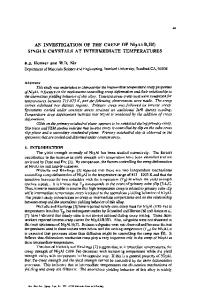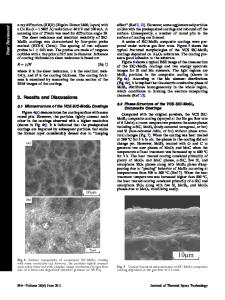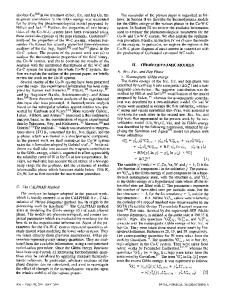An electrochemical investigation of the thermodynamic properties of the NaCl-AlCl 3 system at subliquidus temperatures
- PDF / 151,630 Bytes
- 9 Pages / 612 x 792 pts (letter) Page_size
- 71 Downloads / 398 Views
f considerable scientific and technological interest. The acid-base properties of the system make it an excellent solvent medium for hightemperature chemistry studies. Technologically, the system is important due to its use in the production of aluminum and sodium metals, in electrodeposition of aluminum alloy coatings, and in rechargeable sodium-metal chloride batteries. The present investigations were made as part of our studies on the beta-alumina–based low-temperature sodium production process,[1] in which sodium tetrachloroaluminate (NaAlCl4), the equimolar compound in the binary system, is electrolyzed at ⬃523 K. Sodium ion–conducting  ⬙-alumina serves as the separator in the electrochemical cell, and the sodium metal in contact with it is one of the electrodes. During the course of the work, some unique electrochemical measurements were made to obtain the phase relations in a limited composition range of the NaCl-AlCl3 system (0.3 ⱕ NAlCl3 ⱕ 0.65) and the thermodynamic data of NaCl and NaAlCl4, which is the subject matter of this article. The NaCl-AlCl3 system has been studied extensively, and, hence, no attempts were made in this study to re-evaluate the thermodynamic data or the phase diagram on the lines of the previous investigations. The article, essentially, seeks to K.S. MOHANDAS, SO/E, and N. SANIL, SA/C, Materials Chemistry Division, and TOM MATHEWS, SO/E, Thermodynamics and Kinetics Division, are with the Indira Gandhi Centre for Atomic Research, Kalpakkam-603102, India. P. RODRIGUEZ, formerly Director, Indira Gandhi Centre for Atomic Research, is Chairman, Recruitment and Assessment Centre, Defence Research and Development Organisation, Ministry of Defence, New Delhi-110054, India. Manuscript submitted October 2, 2000. METALLURGICAL AND MATERIALS TRANSACTIONS B
present some thermodynamic aspects of the system, obtained predominantly by novel electrochemical measurements, and to make a comparison with the standard data in the literature.
A. Phase Relations of the NaCl-AlCl3 System Phase relations in the system were studied extensively by various groups.[2–20] The results show considerable scatter, especially for those reported in the acidic range (NAlCl3 ⬎ 0.5). The varying levels of impurities, the high volatility of AlCl3, and the extensive tendency to supercooling are considered as the reasons for the discrepancy. The eutectic composition and temperature of the binary system reported vary from 61 to 65 mol pct AlCl3 and 378 to 388 K, respectively. Compared to the acidic range, the results obtained by the different groups show considerable agreement in the NaCl-rich part of the phase diagram, although a small scatter of about 4 K is observed for the solidus among these results. All these reports are unanimous that only one compound, NaAlCl4, exists in the system. The melting point of NaAlCl4 reported in the aforementioned studies varies from 424 to 429 K. The compound is expected to exist at the equimolar composition of the melt. But, due to the high volatility of AlCl3, an equimolar melt is sel
Data Loading...











